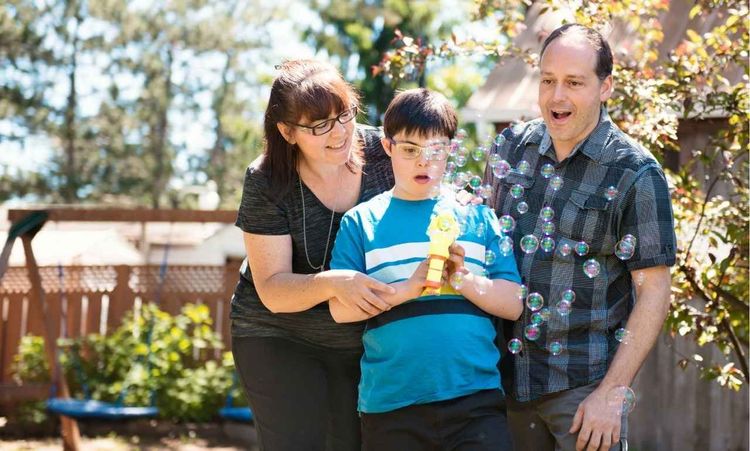Divorce is difficult for any family, but for parents with an autistic child, the challenges increase. Getting to know the best custody schedule for an autistic child is essential. The appropriate selection of custody arrangements can substantially improve the development of children diagnosed with autism spectrum disorders (ASD).
How Can I Make My Divorce More Manageable for My Special Needs Child?

Parents of autistic children face unique challenges during divorce. Your child needs stability and routine more than ever during this time. The right approach can make a significant difference in your child's adjustment.
Research shows that autistic children process change differently than their neurotypical peers. A study from the Children's Institute found that structured transitions reduce anxiety by 60%.
Consistency Is Key
Children with autism thrive on predictable patterns. A consistent schedule between homes helps reduce anxiety and behavioral challenges. Small changes can cause significant distress.
Sarah Thompson, a family therapist in Denver, works with divorced parents of autistic children. "These children need clear expectations about where they'll be and when," she explains. "Even minor schedule changes can trigger meltdowns."
The Miller family discovered this firsthand during their divorce. They created matching schedules in both homes. Their son's anxiety decreased significantly within two months.
Reduce Conflict
A child can sense the tension between parents. Dr. Michael Chen, a child psychologist, suggests using a communication app for all parenting discussions to reduce direct conflict.
Parents should maintain neutral interactions during transitions. This approach helps your child feel secure despite the changes. Consider using a neutral location for exchanges.
The impact of parental conflict affects autistic children more intensely. Research from Boston University shows increased stimming behaviors during high-conflict transitions. Keeping exchanges calm and predictable benefits everyone.
Follow a Routine
Create matching routines in both homes. Your child should follow similar schedules for meals, homework, and bedtime. Visual schedules help maintain consistency.
Lisa Martinez switched to this approach after her divorce. "My son's meltdowns decreased when we matched our routines," she shares. "We even use the same brands of toiletries."
Experts recommend maintaining therapy schedules during transitions. Your child's therapeutic progress shouldn't suffer because of custody arrangements. Both parents should participate in therapy sessions when possible.
Hire a Parent Coordinator
A parent coordinator helps manage disagreements about the custody schedule. They understand the unique needs of autistic children. Their expertise can prevent many common conflicts.
These professionals can suggest schedule adjustments based on your child's response to the arrangements. They also help parents communicate more effectively about their child's needs.
Parent coordinators cost between $100 and $250 per hour. Many parents find this investment worthwhile, as it often prevents expensive court battles later.
Do I Need to Minimize Transitions?
Yes, reducing transitions helps autistic children adjust better. Consider longer blocks of time with each parent instead of frequent switches. Each transition requires significant emotional energy.
The Anderson family found success with weekly transitions. "Our daughter needs time to settle into each home," explains John Anderson. "Short visits didn't work for us."
Research supports this approach. A study of 200 divorced families with autistic children showed better outcomes with fewer transitions. Children maintained more stable behavior patterns with more extended stays.
Social workers recommend gradual schedule changes. Start with your child's current routine and make small adjustments based on their response.
Will We Have Joint Custody or Sole Physical Custody?
This decision depends on several factors. Consider your child's ability to handle changes and each parent's understanding of autism. The court looks at each parent's involvement in therapeutic care.
Judge Maria Rodriguez from Family Court shares her perspective. "We look at each parent's ability to maintain therapeutic services. Consistent care matters more than equal time."
Some families choose nesting arrangements. The child stays in one home while parents alternate staying there. This option minimizes disruption but requires significant cooperation.
Financial considerations also matter. Both homes need proper equipment and supplies. Insurance coverage and therapy costs affect custody decisions.
Are Both Homes Equipped for My Child's Needs?
Both homes should have similar setups. This includes sensory tools, visual schedules, and comfort items. Matching environments reduce transition stress.
Rebecca White, an autism advocate, recommends creating matching calm-down spaces in both homes. "Familiar tools help children regulate emotions during transitions," she explains.
Essential items for both homes include:
- Sensory items like weighted blankets
- Noise-canceling headphones
- Familiar toys and books
- Visual schedules
- Communication devices, if used
The cost of equipping two homes can reach thousands of dollars. Some parents share portable equipment, and others find creative funding through autism support organizations.
How Does Divorce Affect Children With Special Needs Differently?

Autistic children may show increased stimming behaviors during divorce. They might regress in skills or develop new anxieties. Changes in routine can affect sleep patterns and eating habits.
Dr. James Wilson studies divorce effects on autistic children. "They often need more time to process changes than neurotypical children. Parents should expect temporary regression."
The impact can last longer than expected. A two-year study showed adjustment periods ranging from six months to two years. Support services during this time proved crucial.
Some children show surprising resilience. Clear communication and consistent support help them adapt. Success stories often involve parents who maintain strong cooperation.
4 Custody Schedules for ADHD
- Week-On, Week-Off Schedule This schedule provides stability and routine. Your child stays with each parent for seven consecutive days, allowing time to settle into each home's routine.
- 2-2-3 Schedule This works for some higher-functioning children. They alternate between two days with each parent and then three days. Parents must maintain excellent communication.
- Every Other Weekend Plus One Weekday: This schedule maintains one primary home base. It works well for children who struggle with transitions, and the consistent weekday visit maintains connections.
- 2-2-5-5 Schedule Parents alternate two days twice, then five days twice. This creates predictable patterns while sharing time equally. It offers stability with regular contact.
Why These Are the Best Schedules for ADHD
These schedules balance consistency with flexibility. They provide clear patterns that help children understand their routines, and each option allows for adjustments based on the child's needs.
Dr. Sarah Lee, a behavioral specialist, tested these schedules with her clients. "They reduce anxiety by creating predictable patterns. Children learn to anticipate changes."
The success rate varies by family. Factors include the child's age, functioning level, and parents' commitment to consistency. Regular schedule reviews help maintain effectiveness.
Some families combine elements from different schedules. They create hybrid arrangements that match their specific situations. Flexibility within structure proves key.
How Can a Parent Prepare to Gain Custody of an Autistic Child?

Keep written records that demonstrate your participation in your child's healthcare. Record your child's therapy schedules, school meetings, and medical visits. Display your ability to meet the unique requirements for autism.
Mary Johnson obtained primary custody through her successful demonstration of what her autistic son requires. She maintained detailed care logs. Her documentation impressed the court.
Necessary preparation steps include:
- Taking parenting classes focused on autism
- Maintaining communication with therapists
- Creating a suitable home environment
- Understanding educational rights
- Building a support network
According to legal experts, parents should choose attorneys specializing in special needs cases. These experts know precisely how to present their case to the court system. Most charge between $250 and $500 per hour.
Conclusion
Preparation for the appropriate child custody arrangement requires both time and patience. Your child needs specialized care instead of standard scheduling models. Success comes from consistent cooperation. Your child's schedule will probably require changes as they age, so maintain flexibility. Flexibility should be maintained because you need to watch for indicators that change is necessary. Your child's health and safety must always remain your top concern.
Professional support makes a difference. Autism specialists should provide support during your transition process. These professionals assist the entire family in adapting to different daily schedules.
Also Read: Best Witnesses for Child Custody Trial




